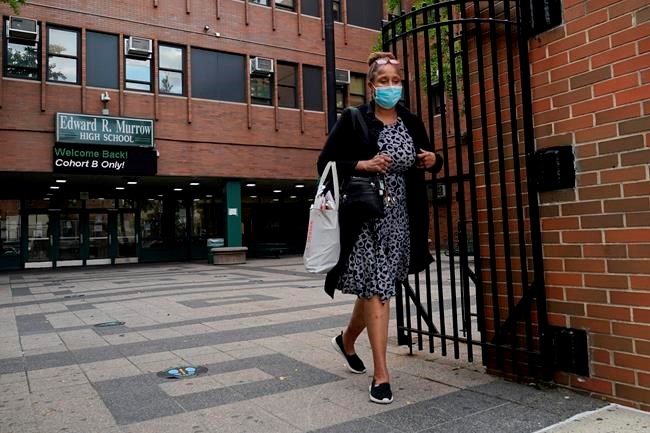New York Gov. Andrew Cuomo on Monday ordered schools in certain New York City
The governor took the action a day after the city's mayor, Bill de Blasio, asked the state for permission to reinstate restrictions on schools and businesses in nine ZIP codes in Brooklyn and Queens where the virus was spreading more quickly than in other parts of the city.
Cuomo said the closures would take place by Tuesday, a day ahead of when the mayor wanted.
“These clusters have to be attacked,” Cuomo said, likening the state to a field of dry grass ready to ignite if burning embers aren't put out fast.
Cuomo, a Democrat, said schools in those areas hadn't been testing students for the virus to identify possible outbreaks and he could no longer guarantee they were safe. Cuomo said he hadn't made a decision yet on whether to also close certain businesses.
City leaders including the mayor, comptroller, city council speaker and the head of the city’s teachers union had agreed to the plan during a phone call shortly before the news conference, Cuomo said.
The mayor’s plan, which required state approval, would close about 100 public schools and 200 private schools including religious schools.
Speaking at a separate event later Monday, de Blasio said, “We’re going to work hard to turn around those nine ZIP codes so that in the coming weeks kids will be able to come back to school.”
Most of the
Cuomo warned that he will shut down temples and churches, too, if compliance with social distancing rules doesn’t improve.
“If you do not agree to follow the rules, then we will close the institutions down. I am prepared to do that,” Cuomo said.
New York City, overall, continues to see the virus spread at relatively low levels compared to much of the rest of the country, but a handful of areas in Brooklyn and Queens have seen infection rates rising.
The nine ZIP codes singled out for restrictions have been responsible for more than 20% of all new infections in the city over the past four weeks, though they represent only 7% of the population.
De Blasio's plan would also shutter nonessential businesses and force restaurants to go back to offering takeout, just a week after they were cleared to begin welcoming diners back indoors.
Cuomo said he wanted more information before ruling on that request. And he also said that targeting hotspots by ZIP code was clumsy, given that the borders often didn't align with where the problems were occurring.
At his event, de Blasio said the city was continuing to work with the state, and was waiting to hear about any alterations the state wanted to make, but expected the state would take action.
“We’re going to be ready to move as early as Wednesday morning," he said. “If the state comes back with a modification, we will of course follow that modification. I do not expect the state to delay for long."
De Blasio had aimed his request at
Officials at four Catholic schools in the impacted ZIP codes asked the governor to allow their facilities to keep operating with in-person learning, saying their safety precautions had been working.
Cuomo's decision “clearly fails to take into account the positive progress our Diocesan school system has made so far this school year,” said Dr. Tom Chadzutko, superintendent of the four schools. “It is unconscionable to think that after the many sacrifices our staff, students, and parents have made, and in spite of our almost non-existent infection rate, the governor has decided to force our four schools to close."
Public health experts say the concept of
“I think there is potential for this to work” and become an example for other places, said Saskia Popescu, an infectious disease epidemiology expert at George Mason University.
“But that being said, the human factors aspect can be a little bit challenging,” she added. “You do want to make sure people feel supported and not isolated and not that they’re being targeted unfairly.”
People in the targeted zones could feel stigmatized or simply go about their business in other
Getting community leaders on board to spread a trusted message “makes a huge difference” and hasn’t happened enough so far, said Dr. Wafaa El-Sadr, a Columbia University epidemiology and medicine professor who is on city advisory boards on contact tracing and broader scientific issues.
“We need many more of these community champions if we are going to get to the point where we need to be,” she said.
The Associated Press


